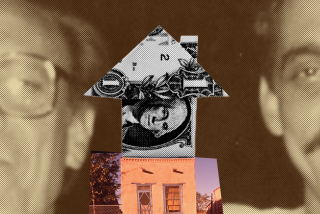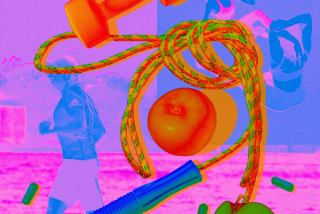A Dangerous Cultural Tradition
- Share via
“Doctor, my child needs a shot.”
Often, that’s more of a demand than a request made by patients at clinics in low-income immigrant communities across Orange County. Doctors and nurses--even secretaries and receptionists--are regularly pressed to administer needless injections to Latino patients with coughs, headaches, colds or fevers.
It’s so common in the immigrant community that grandmothers inject themselves, nieces inject their aunts, and neighbors inject each other.
The preference for shots among Latinos--especially poor, recent arrivals--is just one brick in a cultural wall of beliefs, attitudes and practices that experts say may prevent them from seeking safe and proper medical care, even when it’s available.
That may be what happened to Selene Segura Rios, the baby girl who died Monday shortly after receiving an injection in the back room of a Tustin gift shop. We’ll have to wait for lab results to know if the stuff pumped into her veins was really penicillin and if it caused her death.
Meanwhile, Selene became the latest poster child for reforms in health care for the poor. Hers was the second death in less than a year of an immigrant minor treated at one of the unlicensed storefront clinics as common as burrito joints in the barrios.
The usual culprits were trotted out and blamed for the death, once again denounced as tragic and avoidable. Poverty, lack of insurance, fear of deportation, meager access to low-cost care.
But strangely, you hear little outrage on the streets of Latino neighborhoods. What you hear is resignation. People understand how this can happen. There’s blame enough to go around, they know that. But some of it has to fall on the cultural practices and preferences that lead Latinos to seek out unlicensed care.
It’s not always true that the poor don’t have a choice. It’s that they make uninformed and dangerous choices--even over the objections of legitimate health providers.
A striking example is this fondness for injections, a treatment most Americans fear. No matter the diagnosis nor the indicated remedy, many patients insist on the needle. Some even supply their own Mexican-made powders complete with instructions to stir, load and shoot.
It’s as if they think a syringe full of antibiotics is a cheap and easy cure-all.
A magic bullet.
A shot can sure work like a bullet. In the wrong hands, as we’ve seen, it can kill quickly, efficiently, needlessly. Delivering medicine directly into the bloodstream, doctors say, greatly increases the danger of death from an allergic reaction or overdose.
Oblivious to the risks, some patients even avoid doctors who don’t give shots.
“When they come in to see you, if they didn’t get a shot it wasn’t a complete visit,” said Dr. David Hayes-Bautista, professor of medicine and director of UCLA’s Center for the Study of Latino Health.
“A pan-Latin American predilection for injections,” he calls it. Throughout the continent you can find a whole class of providers who do nothing but give shots. They’re called inyeccionistas and they hang shingles that say, “Se ponen inyecciones (Shots given here).”
When people move to the United States, they seek out the service they’re accustomed to. So nobody is shocked that a father would take his child to a store to get a shot. Or to a convenience market to buy prescription medicines.
Call it usual and customary care.
Latino doctors already know how hard--and counterproductive--it can be to try to talk immigrants out of doing things the old-fashioned way. You can lose patients like that.
So the smart docs give patients a vitamin shot along with an oral antibiotic. Patients go home happy and alive. They don’t go to get the shot on the black market that can kill them.
“Working with these cultural nuances and beliefs can be very tricky,” agreed Jacqueline Cherewick, chairwoman of the Orange County Coalition of Community Clinics. “We have to work alongside with what people believe heals them--blending the beliefs.”
So workers in prenatal care, for example, don’t object when mothers wear a safety pin on their clothing over their navels. They believe it helps the fetus develop better.
“That’s great,” says Cherewick, who also heads the Huntington Beach Community Clinic, which has 40% Latino patients. “Keep your safety pin. We’re not trying to talk you out of something that’s not harmful. But come and take classes, too. And take your vitamins.”
Cultural predilections in health care are not always harmful. The penchant for shots, for example, makes for a community of children with good vaccination records.
And immigrant mothers must be doing something right. Latinos in the United States have the lowest infant mortality rate of any ethnic group, says Hayes-Bautista. Though rates are much higher in their home countries, here Latino babies die less often than whites who are more educated, more affluent and more apt to get quality health care.
That’s part of what’s called the Latino epidemiological paradox. For decades, researchers have known that Latinos also have death rates that are 30% to 40% lower than whites for many major killers, including heart attacks, cancer and stroke. The advantage disappears as Latinos become assimilated.
Despite the risks of using inyeccionistas and other unlicensed providers, Hayes-Bautista isn’t calling for a crackdown.
“I’m a little bit loath to say let’s drive them completely out of business, because we’re not doing much on the other side” to provide low-cost, legitimate health care, he said.
That’s where the rest of the blame comes in.
Gurza is a columnist in the Orange County Edition of The Times.


